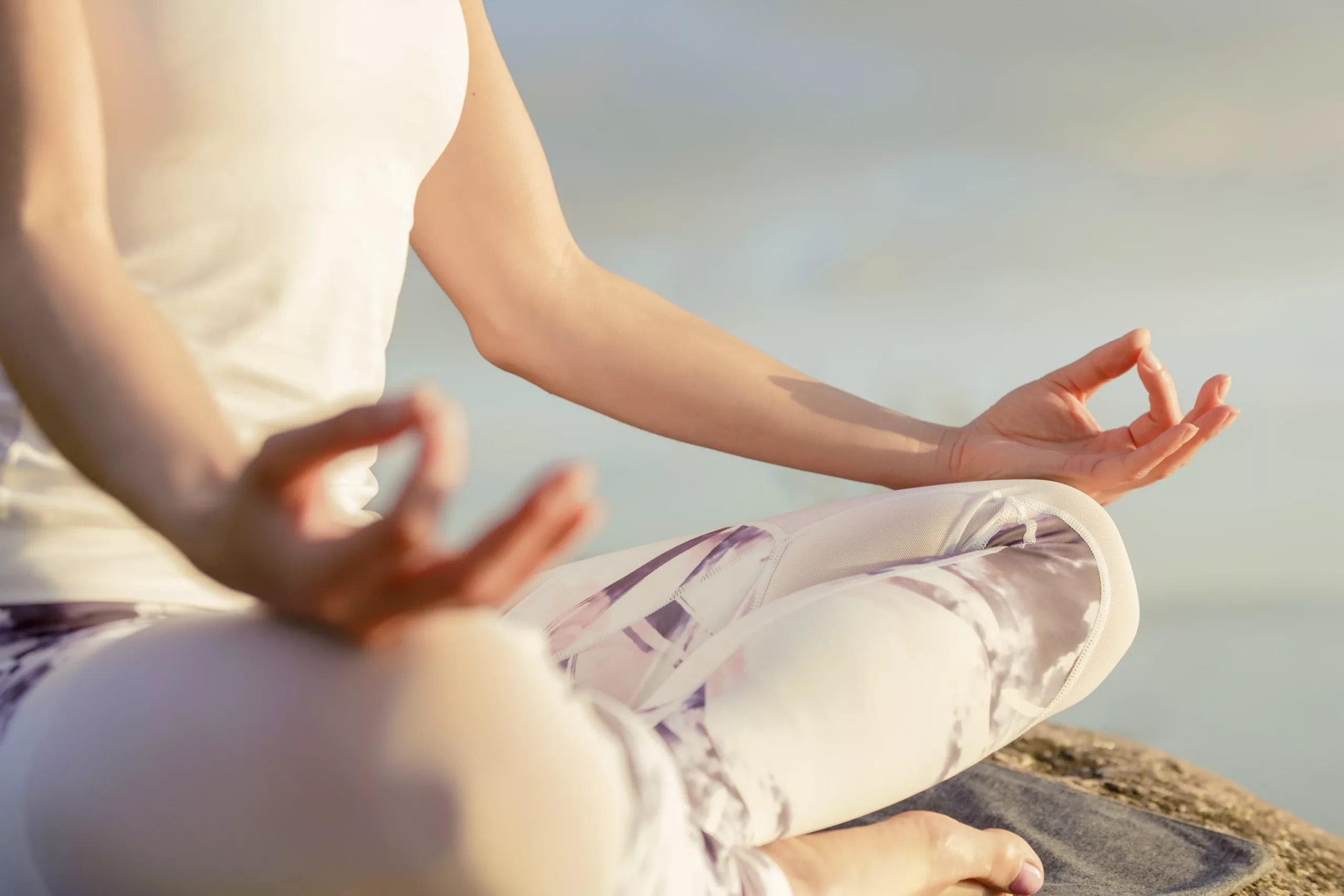For people who are unfamiliar with mindfulness meditation and it’s seemingly endless health benefits, it can seem a little confusing as to what it actually is. Meditation has been around for thousands of years, and often has a strong connotation of being “new age” or “woo-woo.” Many people associate meditation and mindfulness with images of people sitting cross-legged in a field or a big, darkened, empty Fung-Shui looking room.
It’s true that meditation’s roots come from Buddhism and it is integrated into almost all forms of spirituality and religions. Mindfulness meditation, however, is considered to be non-secular and is an accessible and simple yet powerful practice that people from any background, faith, and culture can learn and benefit from.
What is Mindfulness?
Mindfulness is the word used to describe a mental state where one focuses their awareness and attention to the present moment, experiencing thoughts, feelings and sensations but not judging them.
In other words, mindfulness is the practice of getting yourself into this type of mental state, where you are not worried about the past or the future. Instead your attention is focused on the here and now.
Benefits of Mindfulness
There are many benefits of mindfulness meditation. When practiced regularly, it has been shown to increase happiness and joy, and decrease stress and anxiety. Mindfulness meditation is associated with better sleep, and also has benefits to a person’s physical health. When stress and anxiety are lowered, and a person gets an adequate amount of sleep, physical health benefits tend to go hand in hand.
Mindfulness meditation increases happiness and joy because it’s known to help enhance a constructive and positive though process or flow. It can help in decreasing unproductive negative thought loops and what-if anxious thoughts.
According to a study conducted at the University of Wisconsin, when mindfulness meditation is practiced daily it reduces anxiety, depression, and stress. By training the mind and spending time in moment by moment thoughts and experiencing, you are actually training the mind to remain calm, even in moments that are stressful.
The more you practice, the more you learn to create space and time between what you observe and experience, and how you react.
Sounds amazing, right? Here are some simple steps to start to practice mindfulness in your everyday life.
How to Get Started
- Create a time and space to meditate
You do not need any special equipment, special pillows or anything like that. Find a comfortable place without distractions and set aside some time to dedicate to mindfulness. Starting out, as little as 3-5 minutes is plenty. If you like, you can work your way up to longer periods of time.
- Focus your attention on the present moment
To get started, start to notice and observe what is going on in the present moment. Notice when your mind starts to wander and bring it back to the present moment. This takes some practice. Do not be discouraged if you seem to have constantly wandering thoughts. Simply, notice the thought and bring your attention back to the present.
One helpful exercise to get started in mindfulness meditation called body scan. Start at your head and work your way down through every part of your body, noticing the sensations that you hear, feel, and the thoughts you have in the current moment.
- No judging
Notice the thoughts and feelings you are experiencing without judging them. Judging will happen. You will have a thought of what you should or shouldn’t be dong, and other types of judgments. Do not be discouraged when this happens. Simply notice the judgment and let it pass.
- Come back to the present moment
Thoughts tend to wander, especially when first starting out in mindfulness. Don’t be discouraged! That is why it’s called practice. Practice returning your thoughts to the present moment. Returning your thoughts to the present moment over and over again IS mindfulness. You are doing it.
Notice that your thoughts are wandering, and bring them back. Without judgment.
Seems simple doesn’t it? It’s true that the practice of mindfulness is fairly simple, but it’s not always easy!
It might be helpful to search for guided mindfulness meditations for beginners. There are several videos on youtube and other sites to help get you started. Apps such as Calm and Headspace are also great tools that include guided mindfulness meditations for those who are just starting out with mindfulness practice.
Anyone and everyone can experience the many benefits of practicing mindfulness in their mental and physical health. It’s important to remember, however, that mindfulness is a tool. If you are experiencing stress, anxiety, or depression you may benefit from the support of an experienced therapist who is skilled in treating these issues as well as using helpful tools such as mindfulness.
Call or email us today to set up an appointment with a therapist who can help you.
940-222-8552 or email [email protected]
Teen Social Anxiety

